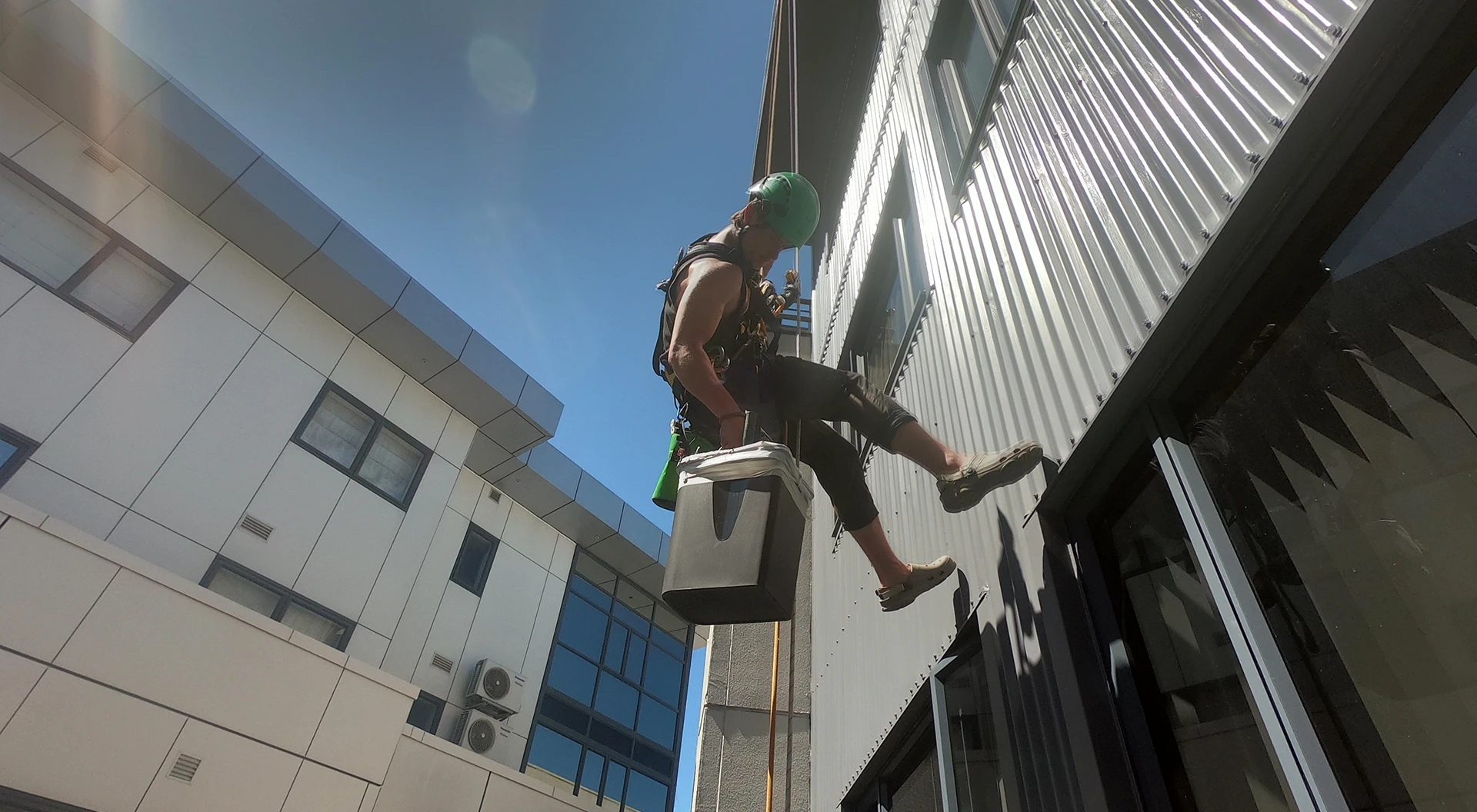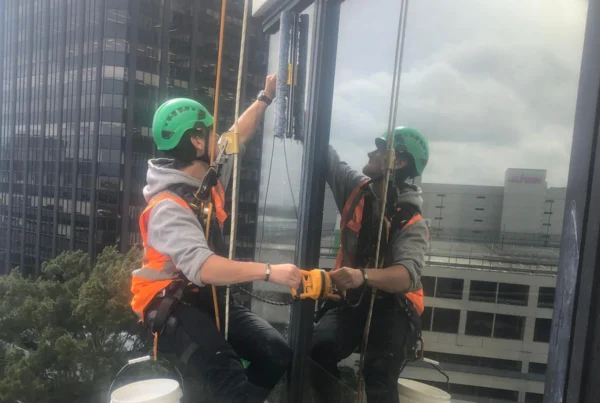Rope Access and Safety Guides: Balancing Skill and Precision
In the world of rope access, safety isn’t just a guideline—it’s the cornerstone of everything we do. Whether we’re scaling Auckland’s high-rises or performing maintenance on mid-level structures, the focus is always the same: getting the job done right, efficiently, and, above all, safely.
At Clean Start, we take pride in setting the standard for rope access services and safety protocols in Auckland. This guide delves into the principles, practices, and precautions that make rope access one of the safest and most efficient methods for building maintenance.
What is Rope Access?
Before diving into safety, it’s important to revisit what rope access is and why it’s such an effective solution. Rope access is a specialised technique that enables trained professionals to perform tasks at height or in hard-to-reach locations using ropes, harnesses, and other specialised equipment. It’s an incredibly versatile method for tasks like high-rise window cleaning, building washing, roof leak repairs, and glass installation.
Unlike traditional scaffolding or cherry pickers, rope access minimises setup time and eliminates the need for bulky equipment, making it cost-effective. Its flexibility allows technicians to access tight or awkward spaces that other methods cannot reach. Moreover, it has a significantly lower environmental impact compared to heavy machinery, aligning with the principles of eco-friendliness.
Why Safety is Non-Negotiable
Rope access work often occurs in environments where mistakes can have serious consequences, which is why safety is more than just a box to tick—it’s a mindset. Rope access has one of the best safety records in the industry, with a lower rate of incidents compared to scaffolding or other height-access methods. This is largely due to rigorous training programmes that teach technicians to use equipment safely, assess risks, and execute emergency rescues. Every rope access technician works with a dual-rope system, comprising a primary working line and a backup safety line, ensuring redundancy and security. Combined with strict protocols that include pre-job planning, risk assessments, and regular equipment inspections, rope access is not about taking risks but about mitigating them with expertise.
Clean Start’s Approach to Safety
At Clean Start, safety is at the heart of every project. Each job begins with a detailed risk assessment, where potential hazards such as weather conditions, structural integrity, and anchor point strength are evaluated. By addressing these factors upfront, we ensure a solid foundation for safe and efficient work.
We use a dual-rope system to minimise risks. The primary rope supports the technician’s weight, while the backup rope serves as a fail-safe, offering a layer of security in case of unforeseen issues. All equipment, including ropes, harnesses, and helmets, is thoroughly inspected before and after each use to meet international safety standards. Regular maintenance and replacement of gear are integral to our safety protocols.
Emergency preparedness is another key aspect of our operations. Every Clean Start technician is trained in rescue procedures, enabling swift and independent responses to unexpected situations. This level of preparedness ensures that even in challenging scenarios, safety remains uncompromised.
Addressing Misconceptions About Rope Access
Despite its professionalism and strong safety record, rope access is often misunderstood. Let’s debunk some of the most persistent myths surrounding this industry.
- Myth 1: It’s Dangerous
The perception of rope access as dangerous stems from its dramatic appearance. To the untrained eye, dangling from ropes hundreds of metres above the ground might seem inherently risky. However, rope access has one of the best safety records in the height-access industry. This is due to rigorous training programmes, redundant safety systems, and strict adherence to protocols, including risk assessments and equipment inspections. Far from being reckless, rope access is a carefully managed and highly professional approach to working at height. - Myth 2: Rope Access is Only for Extreme Heights
Another common misconception is that rope access is only useful for extreme heights, such as skyscrapers or wind turbines. While it is true that rope access excels in these environments, it is equally effective for mid-level buildings, heritage structures, and areas where scaffolding is impractical. The method’s versatility allows it to adapt to a wide range of scenarios, making it suitable for various tasks beyond towering heights. - Myth 3: Anyone Can Do It
Some people believe that rope access is simply about hanging from ropes and assume it’s something anyone can do. In reality, rope access technicians are highly trained professionals who master complex technical skills such as anchor setup, rope management, and task-specific work like painting or leak repairs. Certification programmes like IRATA and SPRAT ensure that technicians are held to the highest standards, requiring not only expertise but also ongoing commitment to professional development. - Myth 4: You Must Not Be Scared of Heights
The stereotype of fearless, thrill-seeking rope access technicians is misleading. In truth, a healthy respect for heights is not only normal but also beneficial. Height awareness encourages caution and focus, which are essential for maintaining safety. Through training and experience, technicians build confidence and preparedness, allowing them to work methodically and professionally. Rope access is about expertise, not fearlessness. - Myth 5: You Must Get Danger Money
The idea that rope access technicians receive danger money due to the perceived risks of the job is another misconception. Rope access is one of the safest methods for working at height, thanks to its dual-rope systems, rigorous training, and adherence to safety protocols. Technicians are compensated for their specialised skills and professionalism rather than any notion of danger. The focus is always on safety, precision, and delivering exceptional results.
Why Auckland is Perfect for Rope Access
Auckland’s urban landscape offers unique challenges and opportunities for rope access. The city’s diverse architecture, ranging from towering skyscrapers in the CBD to historic buildings in neighbourhoods like Ponsonby, benefits greatly from rope access techniques. Auckland’s dynamic weather conditions make regular building maintenance essential to preserve the integrity of exterior surfaces. At Clean Start, we embrace environmentally friendly practices, using eco-conscious cleaning products and minimising waste to align with the city’s sustainability goals.
Conclusion
The myths surrounding rope access often stem from a lack of understanding about the profession. Rope access is not about thrill-seeking or unnecessary risks—it’s about combining technical expertise with an unwavering commitment to safety. At Clean Start, we challenge these misconceptions daily by delivering exceptional results safely and efficiently.
If you need rope access services in Auckland, Clean Start is here to showcase the professionalism and precision that define our work. Whether a project is a few metres off the ground or hundreds, you can rely on us to get the job done right.




